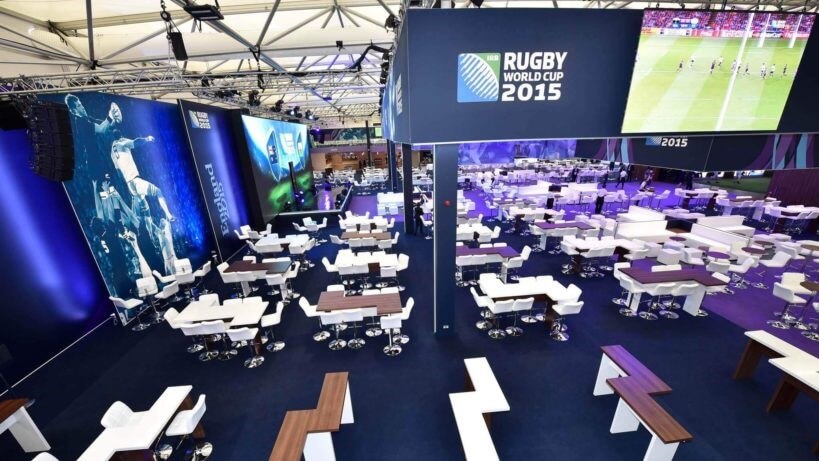
With Anthony Joshua’s redemption victory against Andy Ruiz Jr. in the books, the event has made history for a number of reasons.
Joshua has become a two-time heavyweight champion, while the “Clash on the Dunes” represented the first ever heavyweight world championship fight in the Middle East.
Of course, such a spectacular event needed a worthy setting, which came in the form of the 15,000-seater Diriyah Arena. Interestingly, despite having a permanent feel to it, the arena was in fact temporary – one of the largest temporary seating structures built since the London Olympics and put together in just six weeks.
Temporary structures play a huge role in modern sports, in fact you may well have been in one yourself without even noticing. Here, we discuss their importance in the world of sports and talk about a few examples of their use.
What do temporary structures offer?
Temporary structures offer a variety of uses in sports, but their primary goal is to enable users to offer facilities they otherwise couldn’t ahead of a major sporting event.
Where the “Clash on the Dunes” was concerned, the Diriyah Arena allowed Saudi Arabia to create a specialist stadium that offered suitable capacity, facilities and spectacle to accommodate a world level event, while only coming in a fraction of the cost of a permanent option. Temporary solutions don’t stop with the stadiums themselves, with providers able to offer key facilities such as marquees and portaloos for hosting purposes.
Temporary structures allow users to offer a custom solution for their event, whether that’s a large marquee for a regional tournament or an extra stand for a big game.
Cricket
Major cricket grounds are regular employers of temporary solutions. Old Trafford and Durham ICC are two prominent names that have been redeveloped to accommodate non-permanent fixtures as and when their calendar requires them.
The respective clubs employ additional structures for major Twenty20 clashes as well as international games when ticket demand is higher. This allows them bigger audiences, which in turn offers greater footfall and therefore bigger takings on the gate and through internal vendors.
Racing
It doesn’t matter if you’re talking four wheels or four legs, temporary structures can provide excellent diversity within racing events. A manufacturer’s garage, an entertainment marquee, an additional stand or a sponsored venue, locations like Ascot and Le Mans are regular employers of all sorts of different structures to augment their main attraction.
With tens, even hundreds of thousands of visitors across the weekend, temporary structures provide an all-purpose fix to maximise the potential of such large-scale events.
Marquee events
Temporary structures make even more sense for one off, longer term marquee events such as major tournaments. Domestically, the London Olympics and 2015 Rugby World Cup were two huge employers of temporary structures, primarily to offer support facilities to the global audience visiting the respective tournaments.
With the Olympics and world cup being virtually once in a lifetime hosting events, temporary builds allowed organisers to offer all the facilities they needed to, but strictly for the duration of the tournament, before returning things to normal following the conclusion.
Temporary structures play a key role in a full spectrum of sporting events. Cost effective, versatile and tailored to organiser needs, there’s a good chance you’ll find yourself using one soon.
Thanks for signing up to Minutehack alerts.
Brilliant editorials heading your way soon.
Okay, Thanks!